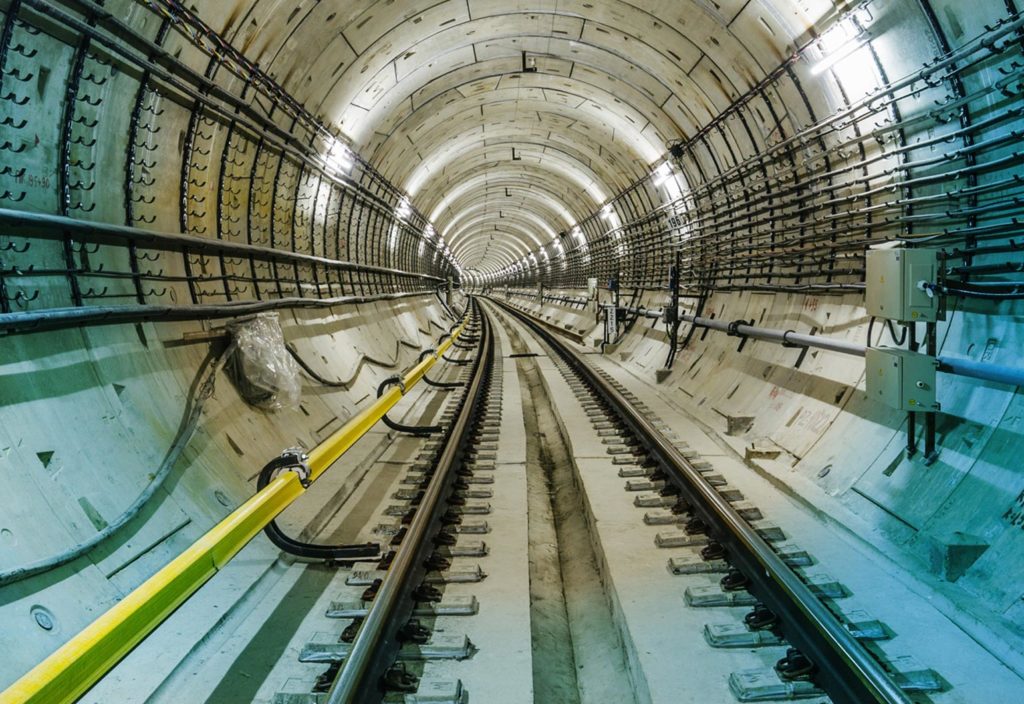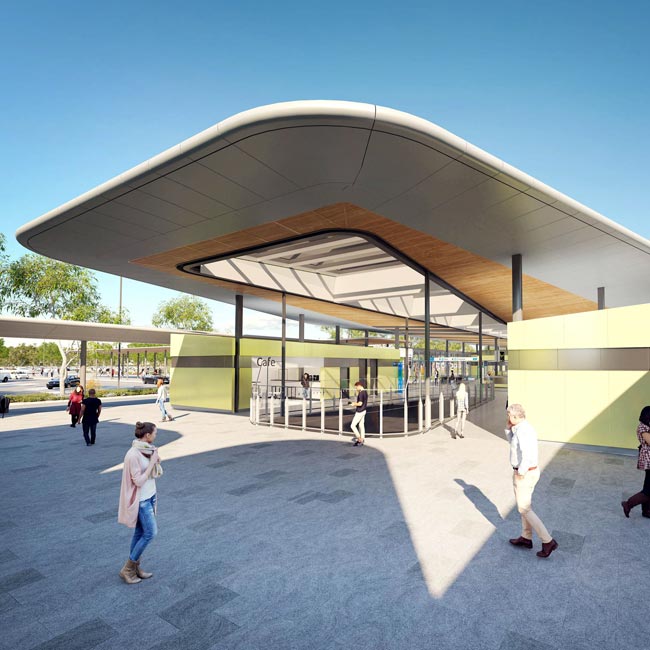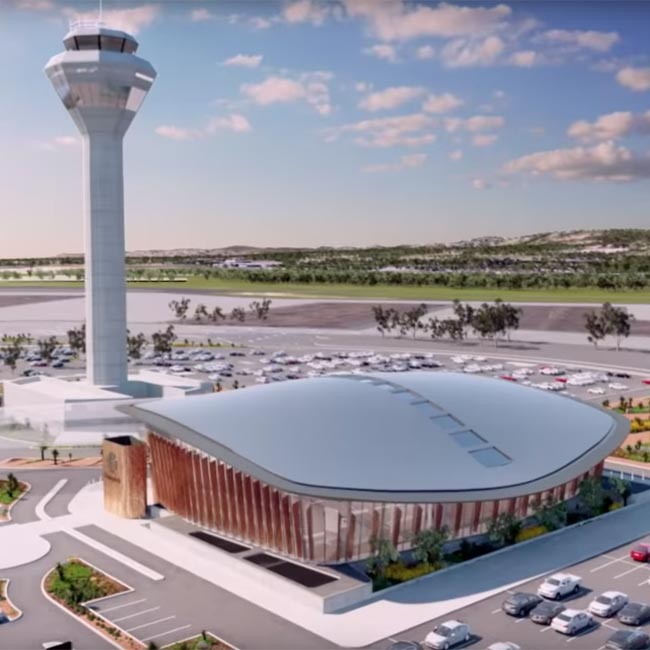Getting from Point A to Point B will soon be a lot easier for Perth commuters, with construction work well advanced on a new section of the city’s rail network.
Beneath the hustle and bustle of Perth’s eastern suburbs, engineers are toiling away on the largest addition to Western Australia’s metropolitan rail network in decades.
Their efforts will deliver the much-heralded $1.86-billion Forrestfield-Airport Link project, which consists of 8.5 km of commuter railway accessible from three new train stations.
Initiated in 2008 and funded by the WA and Federal Governments, the project means the general public will be able to take the train to Perth Airport for the first time ever via an 18-minute journey from the central business district.
The Forrestfield construction site is mostly taken up by the infrastructure supporting the project’s two purpose-built tunnel boring machines (TBMs), which are excavating parallel tunnels.
The key pieces of equipment making the Forrestfield-Airport Link viable are two tunnel boring machines (TBMs) designed specifically for the project by German company Herrenknecht.
The new section of rail will spin off the existing Midland train line at Bayswater Junction and be accessible at underground stations at Redcliffe and Perth Airport, finishing at an above-ground station in Forrestfield in Perth’s eastern corridor.
At a cost of $20 million each, TBMs Grace and Sandy are mixed-shield TBMs, which combine two distinct types of technology.
Slurry mode employs pipes and fluid to turn the excavated sand, gravel and rock material into a slurry and pumping it out to the plant in Forrestfield.
Earth pressure balance mode uses a screw conveyor and valve to control the face pressure by regulating the amount of spoil in the machine. It is best for processing the clay and alluvial muds beneath the Swan River.
Picks and disc cutters remove the soil and rock from the tunnel face. A screw conveyer takes the excavated material to the jaw crusher with a rotary crusher breaking down the rocks inside the slurry box.
A segment erector lifts concrete segments into place to form the tunnel lining to form one of 9000 rings.
Once the ring is complete, the TBM pushes off the previous ring. Once the TBM has advanced 2 m, the thruster ram retracts while the machine goes into ring-building mode.
The site consists of a slurry treatment plant, which processes 600,000 m3 of material from the tunnels; a dive structure, where the trains enter and exit the tunnels; a station construction site; and storage areas that hold 14,000 concrete tunnel segments.
Forrestfield Project Manager and civil engineer Mark Nickerson told create that six segments put together form one ring, which collectively make up the tunnel.
He said the 55,000 segments needed to complete both tunnels are all produced just down the road by the joint venture partners that form the project’s lead contractor, Salini Impregilo-NRW.
The segments are specially designed with steel fibres to assist with tensile strength as well as plastic fibres to help the segment’s fire-proofing performance, Nickerson said.
From the storage yards, the concrete is moved in two stacks of three segments by multi-service vehicles (MSVs) specifically made to bring the segments into the tunnel for assembly.
There, the TBMs take up the segments and slot them into place in the newly excavated part of the tunnel.
Linking up
Meanwhile, 8.5 km away, work is under way to receive the TBMs and connect the Forrestfield Line to the existing Midland line via Bayswater Junction.
Bayswater Project Manager and civil engineer Stephen Keegan said many critical civil works were undertaken prior to the dive structure works commencing. The construction team initially built a 600 m long by 7 m high cast in-situ retaining wall and an additional rail embankment to increase the rail reserve footprint so it would realign the existing Midland line.
It also removed a major gas main, relocated an existing 132 kVA overhead power line from Guildford Road and Tonkin Highway and removed a twin DN1100 Water Corporation main drain that intersected the dive structure’s intended base slab location.
Keegan told create that a micro tunnel boring machine, similar to the TBMs used for the tunnels but one-seventh of the size, was engaged to bore two DN1200 RC pipes that would divert the main drain under the existing rail line.
Once the TBMs have broken through, the crews will install rail sleepers, overhead live equipment, signals, portal building, communications and rail line to connect the new rail service from Perth to Forrestfield.
The 750-m long dive structure was created with diaphragm walls and incorporates a rail bridge that enables the separation of Midland up and down rail tracks over the dive structure.
Once completed, the Forrestfield trains will exit the dive structure and briefly travel in between the Midland tracks until the four tracks converge into two, completing the connection of the Forrestfield line onto the existing rail network.
Divided site
Nickerson said one of the greatest challenges at Forrestfield came in the form of the active Dundas Road, which until late 2018 had cleaved the site in two.
“It created a lot of challenges; for instance, when we started here in late 2016, we had to assemble the TBMs in the storage area at the same time as we built the dive structure, which was needed in order to launch the TBMs,” he said.
“Once these things were assembled, they measured 7 m in diameter and weighed 500 t in total, and they had to cross the road on a 96-wheel transport module while stopping the traffic — and we had to do that for both TBMs.”
The 1 km of road has since been realigned, thereby combining the site with stowage area and station works to the west and TBM operations to the east.
At the site, standing on top of the 260 m long dive structure, Nickerson told create that the diaphragm walls were dug to a depth of 25 m — much deeper than the base slab — with the excavation supported by bentonite, due to its viscosity and density.
“Once they reach depth with the excavation, they pour the concrete in to complete the wall, and that displaces the bentonite and it gets recirculated in the process, and you are left with a seven-metre by 25-metre deep panel,” he said.
Once they established the walls, they dug down and laid the steel reinforced floor slab at a grade of 3 per cent.
Level concourse
Nickerson turns now, and points towards the west end, where construction crews are getting to work on the station.
The Public Transport Authority’s preference was to have an at-grade station entrance there for different reasons, including security and convenience for the public, he said.
“The tricky thing was we had to raise the station by six metres, so we brought in 93 precast panels to facilitate the raising of the station, and we are creating a large retaining wall,” he said.
The panels were all made with starter bars enabling the crews to cast in situ 105 counterforts in the back of the retaining wall.
“We are backfilling the site from the retaining wall at a one-in-30 grade, so whether the public takes the bus or drives or walks, it basically gives the perception of a flat station entrance,” he said.
“You walk right up to the ticket area, you have nice sight lines and there is one escalator down to the train platform, unlike with some other stations where you constantly walk up and down stairs to get anywhere.”
The team is backfilling behind the retaining wall using materials excavated by the TBMs.
Nickerson said that due to the narrow dimensions of the site, the 300 m long retaining wall must leave a four-panel gap until later in the project.
This results in a thoroughfare enabling tunnelling support vehicles to easily access the tunnels.
He said it created an interesting challenge for the site engineers, who had to design the retaining wall foundations to work effectively for backfilling and station concourse works to occur without having a complete retaining wall.
But Nickerson said integration is the biggest challenge at Forrestfield.
“You have a tight interaction between the civils team producing a train station and a tunnelling team trying to do something up to 25 metres underground that is kilometres away, and all of these areas are working in perfect synergy all at once, so it is an interesting balance,” he said.
“Having a live council road though the site is not ideal but that is just how the rail corridor and the precinct worked out, and that proved to be both an engineering challenge and an interface challenge.”
Once the Forrestfield line opens in 2020, the train will take passengers from the CBD to the airport on a two-zone fare.
By 2021, the line is expected to generate 20,000 trips on the network every day — increasing to 29,000 by 2031.
Fast facts
This article originally appeared as “Track to take off” in the March 2019 edition of create magazine.



